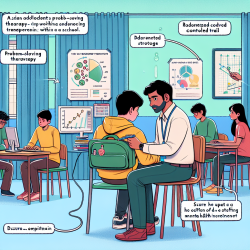Introduction
Sport-related concussions (SRCs) are increasingly prevalent in collegiate football, yet the protocols for managing these injuries are often inconsistent. A recent study titled "The Implementation of a Return-to-Play Protocol with Standardized Physical Therapy Referrals in a Collegiate Football Program: PT’s Role in Return-to-Play" highlights the benefits of integrating standardized physical therapy into return-to-play (RTP) protocols. This blog explores how practitioners can enhance their RTP protocols using findings from this research.
Current Challenges in SRC Management
Concussions are complex injuries affecting multiple body systems, leading to physical, cognitive, and psychological challenges. Despite NCAA policies mandating concussion management plans, inconsistencies remain in RTP protocols across collegiate football programs. The lack of standardized measures for diagnosis and RTP readiness can result in premature returns, increasing the risk of re-injury and prolonged recovery.
The Role of Physical Therapy in RTP
The study emphasizes the importance of early physical therapy intervention in managing SRCs. Evidence suggests that athletes receiving individualized physical therapy within 10 days post-concussion are cleared for RTP significantly faster. However, referrals to physical therapy are often at the discretion of athletic trainers and team physicians, leading to inconsistent application.
Standardizing RTP Protocols
The research outlines a standardized RTP protocol incorporating physical therapy, which was implemented in an NCAA Division II collegiate football program. Key components include:
- Objective baseline assessments of neuromotor and neurocognitive functions.
- Standardized sideline assessments, including vestibular and ocular evaluations.
- A six-step RTP progression incorporating individualized physical therapy treatment.
This protocol aims to reduce premature RTP and improve recovery outcomes by ensuring consistent application of evidence-based practices.
Results and Implications
The pilot study demonstrated promising results, with athletes experiencing faster RTP times and reduced rates of re-injury. The standardized protocol facilitated early intervention, enhancing rehabilitation effectiveness and expediting recovery. These findings suggest that integrating standardized physical therapy into RTP protocols can significantly benefit athletes at risk for prolonged recovery.
Conclusion
For practitioners seeking to improve SRC management, adopting standardized RTP protocols with integrated physical therapy can lead to better outcomes. By aligning practices with the latest evidence, practitioners can enhance recovery times and reduce the risk of re-injury for collegiate athletes.
To read the original research paper, please follow this link: The Implementation of a Return-to-Play Protocol with Standardized Physical Therapy Referrals in a Collegiate Football Program: PT’s Role in Return-to-Play, A Clinical Commentary.










